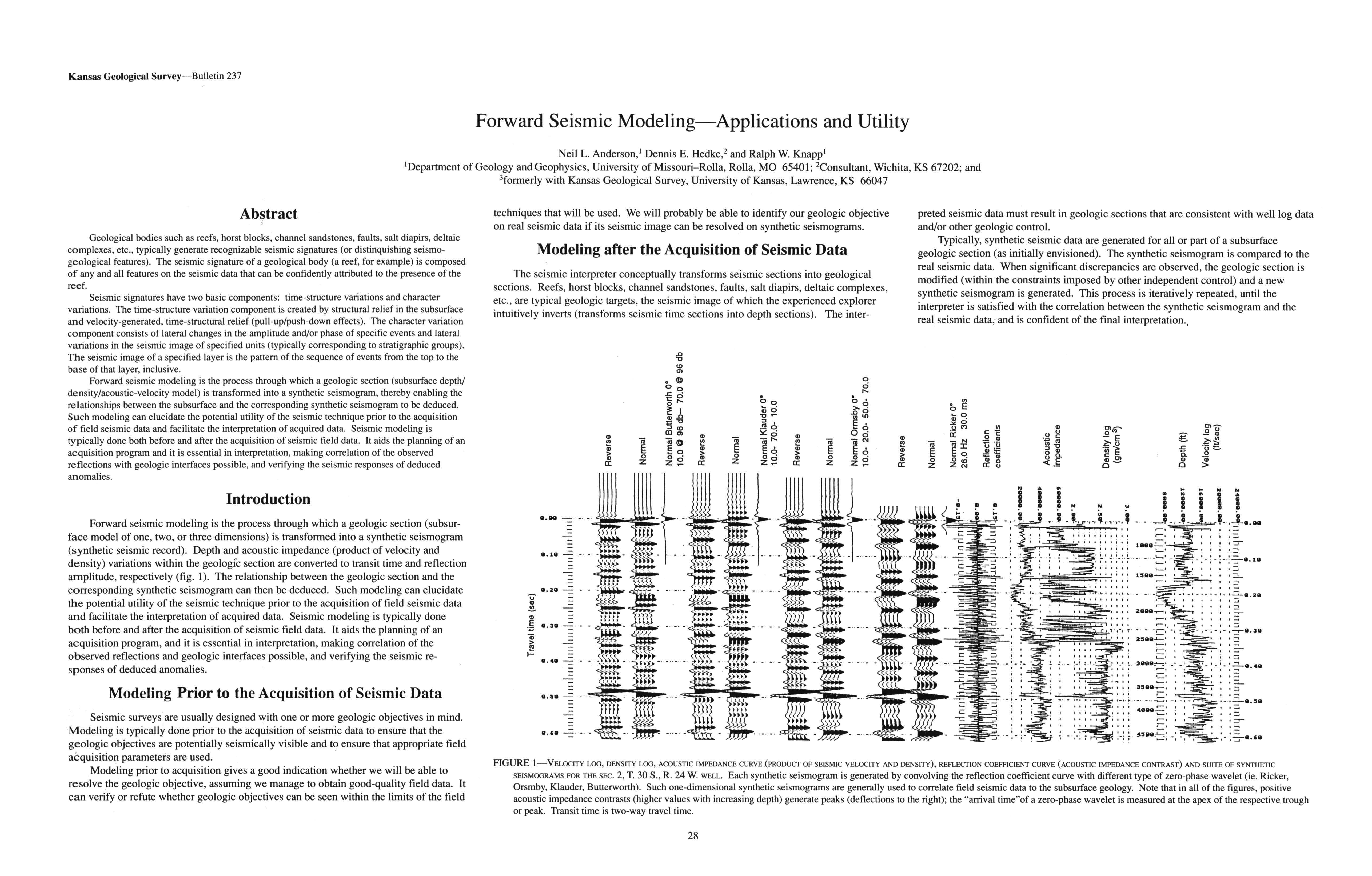Forward Seismic Modeling--Applications and Utility
DOI:
https://doi.org/10.17161/kgsbulletin.no.237.20418Abstract
Geological bodies such as reefs, horst blocks, channel sandstones, faults, salt diapirs, deltaic complexes, etc., typically generate recognizable seismic signatures (or distinguishing seismo-geological features). The seismic signature of a geological body (a reef, for example) is composed of any and all features on the seismic data that can be confidently attributed to the presence of the reef.
Seismic signatures have two basic components: time-structure variations and character variations. The time-structure variation component is created by structural relief in the subsurface and velocity-generated, time-structural relief (pull-up/push-down effects). The character variation component consists of lateral changes in the amplitude and/or phase of specific events and lateral variations in the seismic image of specified units (typically corresponding to stratigraphic groups). The seismic image of a specified layer is the pattern of the sequence of events from the top to the base of that layer, inclusive.
Forward seismic modeling is the process through which a geologic section (subsurface depth! density/acoustic-velocity model) is transformed into a synthetic seismogram, thereby enabling the relationships between the subsurface and the corresponding synthetic seismogram to be deduced. Such modeling can elucidate the potential utility of the seismic technique prior to the acquisition of field seismic data and facilitate the interpretation of acquired data. Seismic modeling is typically done both before and after the acquisition of seismic field data. It aids the planning of an acquisition program and it is essential in interpretation, making correlation of the observed reflections with geologic interfaces possible, and verifying the seismic responses of deduced anomalies.
Downloads

